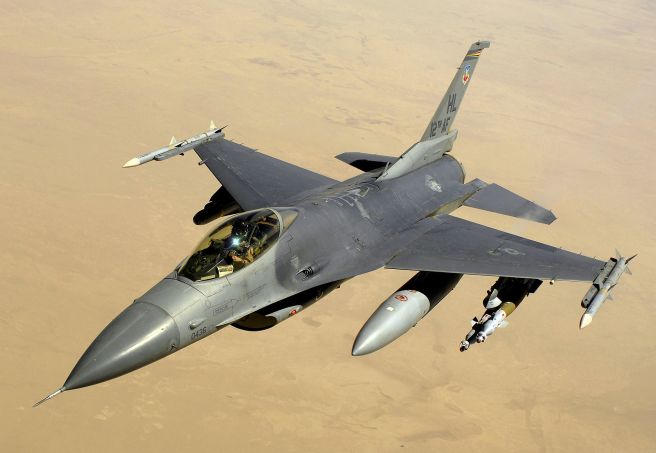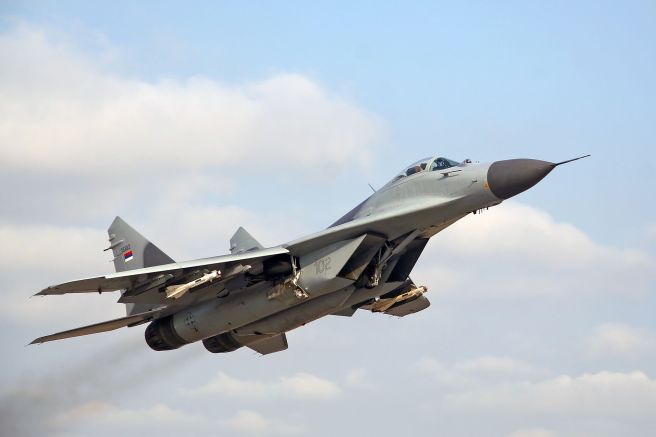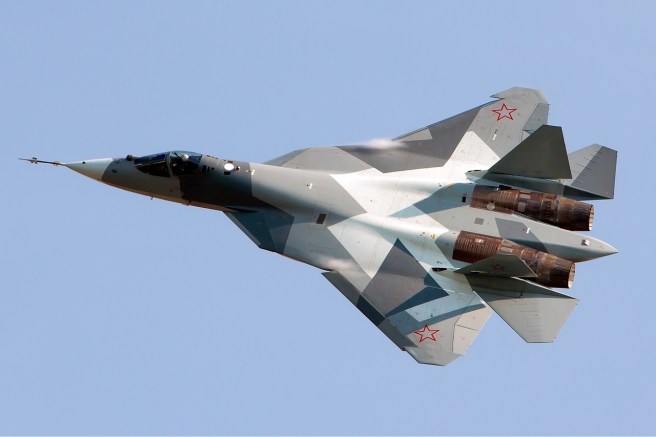
Lantz Bar, Main Salmon River, Frank Church/River of No Return Wilderness, Idaho
I came across an interesting post today — Is the MIG 29 a Better Plane than the F 16?. I found it on the information aggregator, Quora, that lets an expert speak their mind, as opposed to the programmatic structure of Wikipedia, that allows an averaging approach to final content. Questions are asked, experts (or anyone) can answer. Quota then allows Upvotes and Downvotes on whether the content is good, believable, or true. A lot of the questions asked are pretty Authoritarian, and pretty silly — along the lines of ‘who would beat who in a fight’ — including lots of Marvel superhero battles. Would the Hulk beat the Flash? The participants on Quora will opine.
But there’s also a fair amount of content from people with authentic experience, including a number of US Air Force pilots who will happily tell you about the experience of flying certain aircraft that are unreachable to the majority of us outside of a flight simulator program. The post above is a little different, in that I discovered is a cross-link from another site (the Quora poster is an fanboy from Singapore, and the actual post is pulled off the F-16.net site. The pilot that writes, however, seems to be the real thing — and his description is especially interesting.
He notes that he has 2000 flight hours in the F-16, and 500 hours in the MiG-29, and wrote his Masters Thesis on a comparative evaluation of the two aircraft. The F-16 and MiG-29 were introduced in 1978 and 1982 respectively, with the MiG being developed as a direct response to the development of the F-16 and F-15 in their NATO roles as air superiority fighters. Both aircraft have similar ranges and maximum speeds. But what is interesting is how the US and the Soviet Union decided to interpret the role of the pilot, and how that led to different emphasis in design decisions. (The two aircraft are pictured below — the MiG-29 more closely resembles the F-15.) F-16 Fighting Falcon, 2008, from Wikipedia
F-16 Fighting Falcon, 2008, from Wikipedia

Serbian MiG-29, from Wikipedia
It’s interesting to note that fighter aircraft in general are designed, with few exceptions, by relatively rigid design hierarchies (called all sorts of different things -design bureaus, etc.) that are required to interface with their respective military procurers. Validity of design, in the case of military hardware, inevitably starts with being able to beat the other guy in a fight. In that case, it’s not surprising to see aircraft evolution as being pretty incremental, which would also mirror the behavior (as Conway’s Law would predict) of the hierarchies’ receptivity to new ideas. Algorithmic design is going to rule uber alles over more free-form heuristic design in almost all cases. Why? Because in the case of military hardware, you really only need 1%, figuratively speaking, greater performance than the next guy in a fight. In the case of high speed, high intensity warfare, that’s enough. And then the other guy’s dead.
There are exceptions to the rule, usually when a new threat arises, where the paradigm of the free-form design group gets involved. There are numerous books, for example, on the SR-71, the famous USAF reconnaissance plane, designed in Lockheed’s Skunkworks, for the reader to peruse.
But most fighter aircraft (and military hardware in general) are ground out on the incremental curve. The USAF’s Century series of fighter aircraft are a great example. How could they be otherwise? For the most part, the defense contractor structure has to map to the military procurement hierarchy — and that has to control design decisions. In only special cases, well noted in the literature, like the famous Kelly Johnson of the Lockheed Skunkworks, were aircraft design groups separated from that procurement cycle. Then, and only then, were disruptive performance breakthroughs observed.
Back to the F-16/MiG-29 comparison. There’s no question that while the mission for both aircraft was fundamentally the same, the development of requirements started the process of divergence. Russians have been known, for example, for their advanced abilities in aerodynamic analysis, and while the F-16 is no slouch, the MiG-29’s claim to fame is performing a variety of ‘high angle of attack’ maneuvers, like The Cobra, at airshows. The Cobra involves pulling up the stick on the aircraft very rapidly, into what will turn into a stall, like a cobra rearing its head, and then falling back down in a reversal of direction. For those that like that kind of thing, you can watch this Youtube video. The ‘smoke’ you see is actually water condensation in low pressure areas, caused by shedding vortices from the high angle of attack maneuvering.
Flashy, and sure to impress at an airshow, like we would expect from an status-based, Authoritarian v-Meme dominated culture like the Soviet Union. And though F-16 pilots claim the same ability to execute this maneuver, this is not the primary selling point of the airplane. Its overall performance has made the F-16 the plane of choice in the export market — not surprising, considering it comes out of the US Legalistic-Performance-based v-Meme culture. In the article, the pilot discusses the reality of losing all forward airspeed, and the problems with that as a useful maneuver. Go figure.
The real kicker when comparing the two aircraft comes comparing how they take care of the pilot, and maximizing what’s known in the business as Situational Awareness (SA). In this regard, the MiG falls far short. Formations of MiGs are meant to be centrally controlled from the ground, whereas F-16s are supposed to fly in formation with each pilot having much greater autonomy, with better information flow to each independent pilot through sophisticated Heads Up Displays (HUDs), and the ability to choose to change tactics. The short version? Even though fighter aircraft designs are the result of literally thousands of design decisions, you can’t run from the social structure of your corporation, nor the cultural sidebars that influence it.
Here’s the telling quote from the piece:
“The MiG-29’s design was a result of the Soviet view on tactical aviation and the level of technology available to their aircraft industry. The pilot was not meant to have a lot of SA. The center of fighter execution was the ground controller. The pilot’s job was to do as instructed and not to make independent decisions. Even the data link system in the MiG-29 was not meant to enhance the pilot’s SA. He was merely linked steering, altitude and heading cues to follow from the controller. If the MiG-29 pilot is cut off from his controller, his autonomous capabilities are extremely limited. Western fighter pilots are given the tools they need to make independent tactical decisions. The mission commander is a pilot on the scene. All other assets are there to assist and not to direct. If the F-16 pilot loses contact with support assets such as the E-3 Airborne Warning and Control System (AWACS) aircraft, he has all the tools to complete the mission autonomously.”
Where does this come from? Especially in the Soviet Union, it was perceived that the person on the ground, with more advanced, centralized radar, would have a better view of the fight. And if those pilots in the MiG-29s would just do as they’re told, they would win — at least that’s the v-Meme talking. Note the lack of appreciation in the design process of the ability of a ground controller to have the timescales in his head to adapt and react to a rapidly changing, multi-aircraft battlefield environment. The thought, quite literally, never occurred to them — that real-time data and pilot adaptation would be more important than their beliefs about how air war was supposed to occur.
The actual conflict data supports the analysis above. In every conflict between F-16/F-15 fighters and MiG-29s, the F-series has prevailed. According to this website, which sells MiG-29 rides!, a study found F-16 has a 92:13 kill/loss ratio, with MiG 29 having a 16:28 kill/loss ratio.
Before folks start chanting ‘USA, USA!’ one should realize that I wasn’t able to find any cites that indicated true reflective capacity in the various US design decisions that created the F-16. More, it was a naturally emergent design that came out of a history of fighter aircraft evolution and the naturally dominant social/relational empathetic structure. We won by virtue of the fundamental characteristics of our social structure — not because we were, no pun intended, self-piloting. Our own Legalistic/Performance v-Meme culture favored more pilot agency and autonomy, so we naturally built an aircraft that built more of these design features into it. Authoritarian v-Meme features are implicitly and explicitly layered in the MiG-29, like one of those 100 layer tortes. The result is, not surprisingly, a loser.
And the analysis can go on. The latest widely deployed Russian fighter aircraft embody all the design lessons of ‘4th Generation’ fighters built around the world — which means that they learned these lessons regarding taking care of the pilot, too — after the fact. For example, HUDs are common now — we’re starting to see the technology used in automobiles! But the more Authoritarian v-Meme the development system is, and the culture it is subsumed in, the more fundamentally reactive they MUST be. The Authoritarian v-Meme corporation cannot get ahead. Fumbling along in its Status-based thinking mode, it limits metacognition, and its own efforts tend to be confined to mirroring behavior. Don’t believe it? Look at this latest Sukhoi T-50 (first flight 2010.) F-22 much? (First flight 1997.) With organizations stuck in lower empathetic modes, it’s going to be a game of constant catch-up. See the pictures below:

“Lockheed Martin F-22A Raptor JSOH” by Rob Shenk from Great Falls, VA, USA – F-22 RaptorUploaded by Diaa abdelmoneim. Licensed under CC BY-SA 2.0 via Commons – https://commons.wikimedia.org/wiki/File:Lockheed_Martin_F-22A_Raptor_JSOH.jpg#/media/File:Lockheed_Martin_F-22A_Raptor_JSOH.jpg

– http://www.airliners.net/photo/Russia—Air/Sukhoi-T-50/2002344/L/
Such is the power of the v-Memes in our heads — and their inevitable emergence outside in our implicit concerns and design decisions. If the story of the F-16 vs. the MiG-29 is cautionary in any way, it’s also that outside cultural boundary conditions (such as the shape of one fighter aircraft influencing another one — think fighter design culture) can only take you so far. If your corporation implements outside strategies to compete, without creating a social structure that actually creates innovation, and values agency of the people inside, it’s only going to get you so far. You’ll never escape playing catch-up. And that can, quite literally, be detrimental to your survival.
I really like the conclusion here and the focus on the corporation as the subject. I was hoping to see a following post on OODA loops and plane design. Is that where HUD’s came from in the F15?
LikeLike
Ryan — I’ll have to investigate. You’re correct that observe, orient, decide, and act (OODA) would be directly tied to v-Meme structure. I’ll have to read up on HUDs… I’ll bet there is more interesting history as the gaming/Google industry has gone this way.
LikeLike